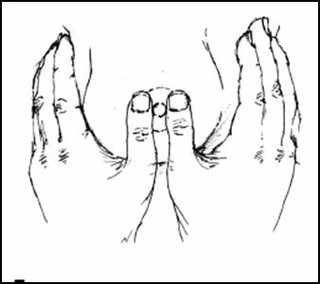Reverse pressure softening is a way to soften the areola (the circle around your nipple). It helps make attaching your baby and expressing (removing your breastmilk) easier.
Reverse pressure softening is helpful:
- during the first weeks to help attachment problems or breast fullness (engorgement)
- if you have some swelling due to IV fluids or medicine given during labour
How reverse pressure softening works
Reverse pressure softening moves mild or firmer swelling away from the areola for a short time. It moves the swelling slightly backwards into your breast for 5 to 10 minutes.
This makes it easier for your areola to change shape and for your baby to attach.
With a softened areola:
- your nipple extends further into your baby's mouth so they can feed better
- it's easier to express milk by hand or with a breast pump on a slow setting
Important
Do not use reverse pressure softening if you have mastitis, blocked ducts or a breast abscess.
How to do reverse pressure softening
The main aim is to make the areola very soft around the base of your nipple. This makes the areola softer so your baby can latch more easily.
Follow these steps:
- Choose one of the methods below.
- Press inward towards your chest wall, counting slowly to 50. Pressure should be steady and firm, but gentle enough to avoid pain.
- Repeat the process until the areola has softened.
- When the areola is softened, you can feed your baby or express milk.
Soften the areola right before each feeding until the swelling goes away. This may take 2 to 4 days.
Make pumping sessions short, with pauses to re-soften the areola if needed. If pumping, use medium or low vacuum to reduce the return of swelling in the areola.
Method 1: one-handed flower hold

Make sure your fingernails are short. Curve your fingertips and place them around the base of your nipple.
Method 2: two-handed one-step method

Make sure your fingernails are short. Place 3 fingers on either side of your nipple. Press your fingertips into the base of your nipple.
Method 3: two-handed thumbs two-step method

If there is someone you're comfortable with who can help, you could ask them to try this method.
They place a thumb on each side of your nipple. The base of their thumbnails should be in line with your nipple. After applying pressure, repeat the steps with their thumbs above and below your nipple.
These methods are adapted from K Jean Cotterman (2010), illustrations by Kyle Cotterman.
Very swollen breasts
If you have very swollen breasts (engorgement), doing reverse pressure softening lying on your back will give more relief.
Soften the areola right before each feeding (or expressing) until the swelling goes away. This may take 2 to 4 days or more.
When expressing, pause often to re-soften the areola.
Watch a video on breast massage and hand expression
Getting help
If you're having any breastfeeding problems, ask for help.
You can get breastfeeding support from:
- lactation consultants
- your public health nurse
- La Leche League leaders
- Friends of Breastfeeding
- Cuidiú breastfeeding counsellors